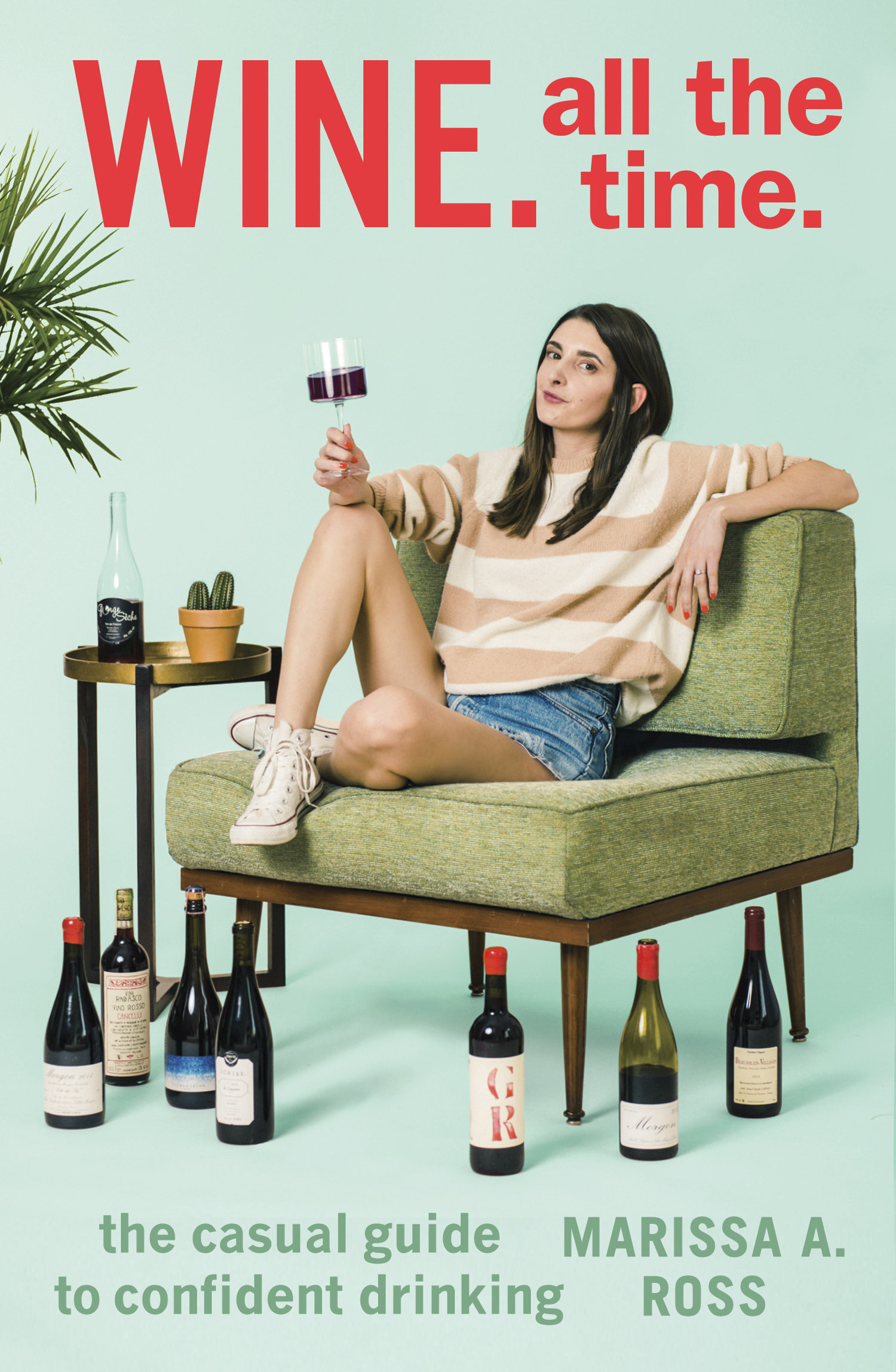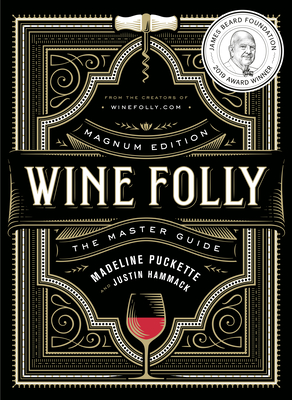Wine Guides
I don't post a lot of themed book reviews, but when I do . . . wait, that's a Dos Equis commercial. Let me step back. Okay, I thought about doing single reviews for this, but I realized that wouldn't work for a couple of reasons: 1. If you are actually looking for guides to help you with wine, I have recommendations for films as well and I don't think a review on learning more about wine would be complete without them. 2. The holidays are coming up. We all have gifts to buy and dinners/parties we need to be present for (or maybe make ourselves less present for--as in, just be drunk the whole time.) I'm not here to judge, I'm just here to make sure everyone gets what they need.
Here's a wine tip that I want you to keep in mind throughout all of this: wine can be a fun and tasty hobby, and it's dynamic enough that you can always find new things to be fascinated by. However, if you don't want to devote the time and money it takes to essentially be eligible to become at least a level one sommelier, you can do just fine at the wine store.
One other quick tip is you can't get around a trial period of figuring out what you like. You have a couple of options when it comes to this part. Obviously, the books I'm about to mention, and the videos I'm about to mention, will include wine lists of things you can try. So, one option, is to take those lists and have a wine party with friends where each person brings a bottle and you try different things. Until you know what you're doing: buy the stuff the author or guide tells you to buy even if it sounds expensive. Bottom line on this piece of advice: don't cut your teeth on the dirt cheap stuff. It doesn't taste like what it's supposed to be and who knows what's in it. Plenty of quality wines are available for about $10 a bottle. I'm not saying you need to go crazy and start off with the $50+ stuff (or ever go there, if you're not comfortable.) I'm just saying that if your only experience with wine is stuff that taste like turpentine, you're going to think you hate a lot of things you might love.
We'll start our tour of the books with Bon Appetit's kid wonder, Marissa A. Ross. (Her official title there is Wine Editor.) Ross covers a lot of ground in this non-intimidating guide that I finished in a weekend. Even though I went into reading this with quite a bit of wine knowledge, I learned some cool new things.
- There is a "Ross Test:" dump the whole bottle down your throat after a few sips. (Yes, this part is kind of a joke, but she does have video of her performing this "test.") I don't think it's a great way to savor wine, but it will probably make you popular at parties as long as it's your own bottle.
- On a slightly more serious note: there's more to Portuguese wine than port. I love port. I'm not much of a sweet wine drinker, and I still love me a good port, and at the holidays, you should too, but more on that later. Portugal also makes some terrific dry (not sweet) red wines that you can probably find on sale at your local liquor store right now. They also make a fabulous slightly effervescent number that is white with a slightly green tinge (don't be afraid---all of this is made from grapes, so this happens) called Vinho Verde. I was prepared to hate it, but I fell in love. It's a great thing to try on a warm afternoon, especially if you have tried rosé and you're not totally sold on it. Same idea. Slightly different flavor.
- Marissa A. Ross also addresses the all important question of "Is it okay to buy wine because the label is cute?" No simple answer here, of course because it depends on where you're buying the wine. If the people running the store know a lot about wine and care about what they stock, it's probably fine. After you learn a little bit about wine, it's a good idea to "interview" the people helping out at the wine aisles at your local liquor store (or if you're really lucky--you'll have a dedicated wine store.)
- How to share wine with others or wine for various occasions. Ross compiled a few scenarios that pose challenges to wine drinking. For example, going camping with wine. Can you do it without lugging a big glass bottle around with you? Of course. Hello cans! (Yes, decent wine is available in cans now.)
I discovered Wine Folly during a tasting class at one of my favorite local wine bars in South East Denver. In addition to offering the comprehensive master guide (pictured above,) they also have free guides available on their site plus fun accessories in their store for those of you who might be interested in throwing a tasting party.
The Master Guide is set-up in a highly visual an easy reference format so that you can find what you're looking for quickly. The food pairing information is especially helpful since most of us get sucked into doing a wine and cheese party at some point. Yes, it's more complicated than just pairing white wine with cheese.
I definitely recommend keeping this around as a handy reference for your kitchen or parties. It's a little pricey at $35 a copy, but it's a pretty book that will likely intrigue friends when they visit and it will save you a lot of time, money, and anguish.
The Great Courses: Everyday Guide to Wine is a combination of audio/video and simple text, if you want to dive deep into understanding regions and pairings. Jennifer Simonetti-Bryan, Master of Wine, takes you on a long journey through whites, reds, sparkling, and dessert wines. If you take a look at the link and decide this is something you want to do, but the money is an obstacle, check your local library. Most libraries have all of The Great Courses available, and some of them may even offer this one on streaming. Another possible option is you may be able to access it through an existing Audible subscription. If you want it for yourself, you might actually be better off subscribing to The Great Courses because I think this is part of a typical subscription package---check first though.
Wine For the Confused with John Cleese doesn't seem to be "in print" any longer (it's a DVD.) If you can find a used copy or happen upon it on YouTube somewhere, it's worth watching. Comedian John Cleese of Monty Python and A Fish Called Wanda fame takes you through the basics of what to expect from some of the most common wine varietals as well as advice on shopping, flaws, and glassware.
As I bring this post to a close, it occurs to me that I may need to share a little bit more about a recent trip I made to South Dakota and some of the wines we happened upon there. I will leave you with this: you can find yummy wine just about anywhere for whatever price point you need. (Okay, if it's $2-$5 a bottle and you're not buying house wine in Italy, use caution, but for $9.99 and up, yes, you can find something that won't melt the glass.)
Also, be adventurous! Every state in the United States now produces wine. You may cringe at this thought, but when you get out and try the locally produced wine, you can learn something new about the state and its agriculture. Plus, vintners (winemakers) are savvy to the local terrain (or terroir as it is referred to in winemaking terms.) They know which grapes flourish where they live and you can end up finding some unique blends in other states. Liquor store sales don't tend to yield huge returns for small vintners, so you're unlikely to see them in your local wine store. However, that doesn't mean you can't have your favorite liquor store custom order something you're in love with. You just might need to meet certain quantity requirements. The wine and spirit industry in the United States is heavily controlled by a few distributors and that can end up being a whole other discussion that has nothing to do with wine guides. Get out there. Try things. If you like something, support that winemaker.
Postscript: Sorry, I said I was going to circle back to port and the holidays and lied. Port deserves its own detailed explanation, but it tends to be a popular choice around the holidays. It is a fortified wine which means it has all the alcohol content of wine plus a spirit that is added to it. Consequently, it will get you hammered quickly, can remain open for a while without negative effects (so you can leave it out for a few days, if it lasts that long), and it's sweet. It's a good choice for all that extra chocolate you're munching on at Christmas. For an extra treat, some people dip the rim of their glass in melted chocolate to do a double duty tasty sip.

